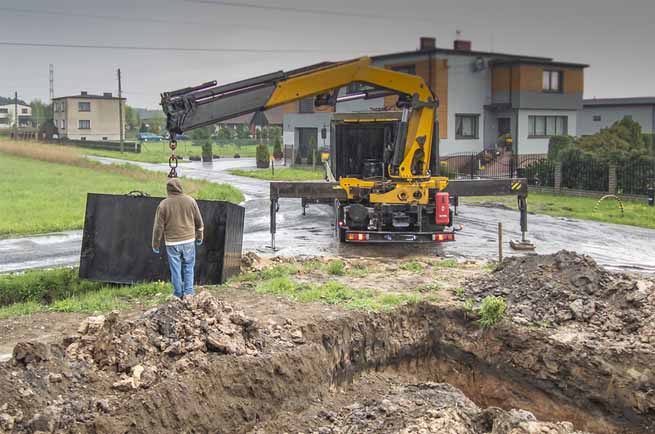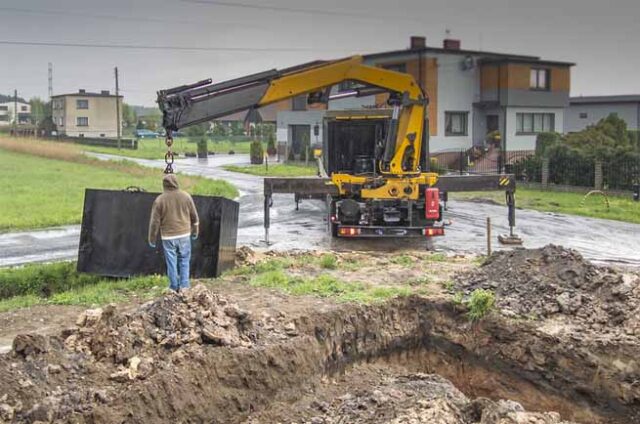
Installing a septic tank is a significant project that requires careful planning and consideration. Whether you’re building a new home or upgrading an existing system, understanding the key factors involved can ensure a successful installation. Important considerations include the size and type of the septic tank, soil conditions, local regulations, and the layout of your property.
Each of these elements plays a crucial role in the efficiency and longevity of your septic system. By being well-informed and prepared, you can avoid common pitfalls and ensure that your septic system meets your household’s needs while complying with all regulations. Let’s explore the steps to take for a smooth and effective septic tank installation.
What Permits Are Required For Septic Tank Installation?
An essential first step in installing a septic tank is to understand and secure the required permissions. The specific permits and regulations required can vary widely depending on your location, so it’s essential to start by contacting your local health department or environmental agency. Here’s a breakdown of what you typically need to do:
1. Research Local Regulations
- Check with your local health department or environmental protection agency to understand the specific requirements in your area.
- Each municipality may have different standards, so it’s important to gather detailed information early in the planning process.
2. Submit a Detailed Installation Plan
- Prepare a comprehensive plan of the proposed septic system installation. This plan should include:
- A layout of your property showing the location of the septic tank and drainage field.
- Detailed drawings of the system design.
- The plan must demonstrate how the system will handle wastewater and ensure it won’t contaminate local water sources.
3. Conduct Necessary Tests
- Perform a soil test (percolation or “perc” test) to determine the soil’s ability to absorb and filter effluent.
- Provide the test results as part of your permit application.
4. Obtain Permit Approval
- Submit your detailed plan along with the soil test results to the local authority for approval.
- Pay any required fees associated with the permit application process.
5. Schedule Inspections
- Both during and after the installation procedure, be ready for inspections.
- Inspections are conducted to verify that the septic system is installed correctly and complies with health and safety standards.
- Initial inspection typically occurs before the system is covered, and a final inspection after the installation is complete.
6. Adhere to Specific Installation Requirements
- Follow all guidelines provided by the local authorities regarding installation techniques, materials, and system specifications.
- Ensure that the system layout maintains the required distances from water sources, buildings, and property lines to prevent contamination.
Failing to obtain the necessary permits can lead to significant consequences, including:
- Fines: Non-compliance can result in hefty fines imposed by local authorities.
- Legal Issues: Unauthorized installations can lead to legal disputes and difficulties in selling your property.
- Costly Modifications: You may be required to make expensive adjustments to your system to meet regulatory standards.
Securing the proper permits is not just a legal formality; it’s a critical step to ensure your septic system is safe, effective, and compliant with environmental protection standards. Always prioritize this step to avoid complications and ensure the longevity of your septic system.
How Do Soil Conditions Affect Septic Tank Installation?
Soil conditions play a crucial role in the design and installation of a septic tank system. The soil must be able to absorb and filter the effluent from the septic tank effectively. Before installation, a percolation test (or “perc test”) is usually conducted to determine the soil’s absorption rate. This test involves digging several holes in the proposed drainage area, filling them with water, and measuring how quickly the water is absorbed by the soil.
Different soil types have varying absorption capacities. Sandy soils typically have high absorption rates, making them ideal for septic systems, whereas clay soils can be problematic due to poor drainage. Rocky or shallow soils may also pose challenges, requiring alternative solutions like raised drain fields or specialized treatment systems.
Understanding the soil conditions on your property helps in designing an appropriate septic system that will function effectively without posing risks to groundwater or nearby water bodies. It also impacts the size and layout of the drainage field, ensuring that the system can handle the expected volume of wastewater.
What Are The Costs Involved In Installing A Septic Tank?
The kind and size of the system, the state of the soil, and the cost of municipal permits are just a few of the variables that can significantly affect the cost of establishing a septic tank system. For a conventional system, homeowners should budget between $3,000 to $7,000; however, more elaborate installations may incur higher expenditures.
Initial expenses include the cost of the septic tank itself, which can range from $500 to $2,000 or more, depending on the material and capacity. Excavation and site preparation are additional costs, often ranging from $1,200 to $4,500. The drainage field and piping materials add further to the total cost.
Labor is a significant component of the overall expense, with professional installation typically accounting for 50% or more of the total cost. Additional costs may include soil testing, permits, and inspections, which can add several hundred dollars to the project.
Investing in a quality septic system is crucial for long-term performance and reliability. While cutting costs might be tempting, it’s essential to prioritize quality materials and professional installation to avoid future problems and costly repairs.
How Does The Size Of A Property Impact Septic Tank Placement?
The size of your property significantly influences where a septic tank can be placed. Larger properties generally offer more flexibility in choosing an optimal location for the septic tank and drainage field. Key factors to consider include the proximity to the house, water sources, and property lines.
Local regulations often dictate minimum distance requirements between the septic system and buildings, wells, and surface water to prevent contamination and ensure safety. For instance, a typical requirement might be that the septic tank must be at least 50 feet from a well and 100 feet from a lake or stream.
In smaller properties, finding an appropriate location that meets all regulatory requirements can be more challenging. Limited space might necessitate the use of alternative septic system designs, such as aerobic treatment units or sand mounds, which can fit into tighter spaces and adapt to varying soil conditions.
Proper placement also considers the slope of the land, ensuring that effluent flows downhill to the drainage field. The layout of the drainage field must maximize the available space while maintaining efficient wastewater treatment and disposal.
Choosing the right location for your septic tank and drainage field is critical for the system’s performance and longevity. It requires a thorough understanding of property dimensions, soil conditions, and regulatory requirements to make an informed decision that safeguards your investment and the environment.
Septic tank installation is a multifaceted process that involves careful planning and consideration of various factors. Understanding the permitting requirements, soil conditions, costs, and property size impacts can help ensure a smooth and successful installation. Working with experienced professionals can further enhance the quality and reliability of your septic system, providing peace of mind and long-term functionality.
Why Choose HoneyBee Septic Tank Service?
When it comes to septic tank installation, HoneyBee Septic Tank Service is your best choice. We guarantee the highest levels of efficiency and quality in every installation job thanks to our team of committed specialists and years of experience.
Because of our proficiency with the local laws, we can take care of all the required permissions and inspections, saving you time and trouble. We make a concerted effort to comply with all legal requirements since we recognize how important it is to follow health and safety regulations.
In order to create a septic system that is specifically suited to your property’s requirements, HoneyBee Septic Tank Service performs extensive soil testing and site assessments. Our crew ensures the longevity and dependability of your septic system by using premium materials and cutting-edge installation procedures. Our dedication lies in offering open and honest pricing, along with comprehensive estimates that encompass all expenses up front to avoid unpleasant surprises.
Our customer-centric approach means that we are always available to answer your questions and address any concerns. We provide ongoing support and maintenance services to keep your septic system functioning optimally for years to come.
FAQs About Septic Tank Installation
What is the average cost of installing a septic tank? Septic tank installation costs can range from $3,000 to $7,000 on average, depending on the type of system, the state of the soil, and local permission costs.
How long does the installation process take? The installation process typically takes one to two weeks, depending on the complexity of the project and weather conditions.
Do I need to test my soil before installation? Yes, a soil test is crucial to determine the soil’s absorption rate and design an effective septic system.
What maintenance is required for a septic system? Regular maintenance includes periodic pumping, inspections, and avoiding the disposal of non-biodegradable materials down the drain.
Can I install a septic tank myself? While it’s possible, it’s highly recommended to hire professionals like HoneyBee Septic Tank Service to ensure compliance with regulations and proper installation.
Ready to Start Your Septic Tank Project?
Don’t leave your septic tank installation to chance. Contact HoneyBee Septic Tank Service today to schedule a consultation. Our expert team is ready to provide you with the best solutions tailored to your needs. Call us now or visit our website to learn more about our services and get started on your septic tank project with confidence.

